Trip Date: Feb 23rd-24th, 2023
Participants: Noah Macdonald, Zach Bloom
[Below is a trip report written by Zach. My comments are appended on the end. I'm posting this on his behalf because he isn't a VOC member, though he is a student at UBC.]
Zach’s Trip Report:
On February 23rd, Noah and I did the Garibaldi Neve Traverse, a classic glacier ski-tour in Squamish that connects Diamond Head and Rubble Creek. We had been planning the trip for a few weeks, and the stoke was incredibly high. We were also excited to potentially make a summit attempt on Mount Garibaldi in order to ski the Northeast face. The Avalanche rating was 2-2-1, despite some new snow and lots of wind earlier the week, so we were cautiously optimistic about conditions. The main concern that we planned around was the cold—the forecast called for between -15 and -20c—which we prepared for by bringing lots of extra hand and foot warmers, extra layers, and a stove. All told, the day was an excellent adventure towards the margin of, though still definitely within, what we had prepared for.
Chapter I: The Pre-Snafu Era—5:30-9:30am
After a 4:00am wakeup and a big breakfast of bacon, egg, and cheese sandwiches and coffee, we drove off for the diamond head parking lot. By 5:30am, we were skinning up the trail. Despite the -15/-20 temps, we were shedding layers and making fine time up to the Red Heather Warming shelter, which we reached at about 7:00am. We enjoyed a beautiful sunrise as we toured the meadows towards Round Mountain. As we approached Round, we began to notice shooting cracks indicative of wind loading. One in particular propagated 2 meters or so perpendicular to our skin track. Taking note of this, we decided that Garibaldi was likely not in the cards. We continued along the trail until we gained Paul Ridge. This section was lovely. The day was very clear and we had great views in every direction, including particularly good views of Atwell. At 9:00am, we reached the Elfin Lakes shelter, which we sat next to for about 10 minutes before continuing on.
[Sunrise looking back from Round Mountain area]The shooting cracks continued, and we also noticed signs of recent slab activity on Columnar peak nearby. We were becoming a little trepidatious about the avalanche paths that we would have to cross beneath the gargoyles as we reached a set of gullies that represented the most obvious turn-around point. After some deliberation, we decided that Noah would ski cut the North facing slope of the first gully, and this would give us a good data point. Noah made the ski cut and crossed the first gully with no slab activity, so we continued on and crossed the next gully. I was still a little nervous about the wind loading, but the problem seemed to be mostly contained to southern aspects. We also knew that the traverse, by and large, avoided avalanche terrain—and Garibaldi was at this point firmly off the table. Nothing we had seen so far demanded that we turn around, so it seemed OK to keep going with caution.
[A very aesthetic paul ridge, a short ways before the Elfin hut]Chapter II: 1 Snafu 2 Snafu—9:30am-1:45pm
A little ways further, at about 10:15—the 4:45 mark—I noticed a numb feeling in my big toes, and told Noah about it. We decided we should stop for a minute and put foot warmers in my boots. When we took my boots off, we noticed that blood had seeped through my socks at the toes. We busted out the first aid kit and, using a puffy to block the wind, swabbed each toe with alcohol and put a bandage around each. Before putting my socks back on, I put a foot warmer on each of my toe boxes. Looking back, this was definitely a mistake.
Once my boots were back on, we kept going. The pain subsisted for a little while, and then eventually went away. After a little ways, we transitioned and skied across the two major avy paths below the gargoyles, which were full of cemented avalanche debris. These were my first turns on the rental Dynafit 88’s, and they seemed OK, given the debris. At the bottom of the debris field was a short, steep slope leading down to the creek. It definitely looked wind loaded, and after a brief conference, Noah decided to do a high ski cut right across the top of the slope. I clenched my cheeks and watched as he cut across, generating a size .5 slab avalanche with a ~10cm deep crown. He then skied down the face and I followed.
The term “followed” might impute a little more grace to my skiing than it deserves. Midway through the face, I overturned on my light, skinny skis, washed out, and did a full summersault before resuming my ugly turns across the newly debris filled face. At the bottom of the face, we transitioned, shared a laugh, and decided that that would be the scariest part of the day.
[The little slab Noah set off, with my ski tracks going through the debris]We went over a natural bridge to the east side of the creek, and then started skinning north. Immediately, the face seemed too steep, and the skinning too sketchy. Between the avalanche hazard above us and the consequence of the frigid water below us, we decided that we must have crossed too early, and went back over to the west side of the creek. Heading north along the west side, we immediately reached a small slope that we would have to boot pack up. Despite being only 10-15 feet high, the slope presented a bit of a thorny obstacle. The risk was that we would activate a slab on the small slope (which started to happen the moment Noah started his way up). The consequence was that the slope relieved directly into the creek. Between these two issues, the idea of bootpacking up the slope without protection seemed too dangerous. We got out our glacier cord and I put Noah on belay, ready to arrest his fall if the slope went and he hurtled towards the creek. Nothing so dramatic happened, and shortly after he started up, Noah had topped out. I followed (on belay also), and we put our skis back on. 100 feet later, we had to take our skis back off to cross the actual bridge, which was a narrow slab of wood covered with snow. Noah was much more confident crossing the bridge then I, so much so that he came back and took my backpack from me as I slowly straddled my way across. Finally, we were on the east side of the creek with the path towards the Opal Cone straightforwardly ahead. All told, it took us slightly over an hour to cross the creek.
[Crossing ring creek with all the grace in the world] [Our less than straightforward creek crossing]
Once we were finally back on track, we began the skin up towards the Opal Cone. This was a little less than two hours of skinning above the creek, with overhead hazard for much of it. We consistently gained elevation during this time, with a few sections of switchbacks. For most of this time, Noah was a fair bit ahead of me, though never out of eyesight. This happened naturally because of his faster pace, but was probably a good idea either way because of the overhead. A little past the 8 hour mark—at about 1:45—we reached the ridge next to Opal Cone and were looking forward at the Lava Glacier. Finally out of avalanche terrain, we had a well earned bit of sandwich before roping up and starting on the glacier.
[Noah looks back at me. The gargoyles are behind us as we skin up Ring Creek towards the Opal Cone]Chapter III: Red Snafu Blue Snafu—1:45pm-5:30pm
After lunch, we began what would be the most pleasant part of the day. We roped up and started walking towards the Neve along the Lava Glacier. The sun was high, the views were tremendous, and we were stoked to be approaching the culmination of our hard work. The glacier was bomber, with no obvious hazard anywhere, and after a little ways Noah suggested that we could ditch the rope and walk together, if I felt comfortable with it. I did, and for the next hour we pleasantly hiked across the glacier, talking about the mountains around us, the illusion of foreshortening, and skiing we wanted to do.
[Happily walking along the Lava Glacier]The night before, we had planned out a check-in schedule with Makenna. The planned check-ins were as follows: we would send her a message at the midway point (either the neve or the summit of Garibaldi) to which she would not respond. Wherever we were at 7pm, we would send her a check in that she would respond to. After that, we would check in as appropriate until we sent her the message to come pick us up at Rubble Creek. If she didn’t hear from us by midnight, she was going to call SAR.
At this point, we were happily moving along the glacier, and could see the Neve gently rising in front of us. Because we were a little later than we wanted, we sent Mak the following message on the inreach at 2:40pm: About halfway! Got slowed down a lot on first half, but second should be smoother sailing.
The critical piece of information we didn’t know when we sent this message is that we were not only not halfway, but were actually on the entirely wrong glacier. What we thought was the neve was actually the upper flank of the Bishop Glacier. We realized this about 30 minutes after we sent our halfway message to Mak. What had happened is pretty simple. We were seduced by the beautifully straightforward glacier road ahead of us. The eye follows the Lava glacier to its terminus at the upper flanks of the bishop glacier (which looks exactly like a neve), and the way forward seemed so obvious that we simply didn’t bother to check.
[This is not the Neve] [Our location on our track when we sent our midway message to Mak]After we realized our error, Noah went forward a bit to see if there was a safe way back on track without having to double back. He decided there wasn’t one that wouldn’t expose us to avy terrain, so we doubled back and started moving at a quicker clip towards where we were supposed to be, which was the junction between the Lava and Garibaldi glaciers. This begins the most stressful part of the day. I realized that we were in a race with daylight, and because of lingering worries about the snowpack I really didn’t like the idea of skiing down from the Neve in the dark. For the rest of the day (and night) we would take no more pictures. Once we finally regained the proper trail, we roped back up (the Garibaldi glacier looked more hazardous than the Lava Glacier did), and began the steepest ascent of the traverse. Because the sun was starting to set, we tried to set a quick clip. What that means is that Noah would take a dozen or so strides, and then the rope would come taught on my wheezing body pitifully trying to keep up. A few deep breaths later, we would repeat.
The final push up to the Neve was the least happy part of the day. It was tiring, beginning to get dark, and we were starting to feel quite cold. Here, I became generally sketched out with the overall situation. At no point was I scared, but I was certainly feeling uneasy. I felt an urgency to get to the top before it got too dark, but at the same time, the slope was getting steeper and a fall would be quite consequential. There was also the lingering wind slab concern. At one point, I told Noah that I was feeling sketched out. Though I could tell he had a little bit of the same uneasiness, he told me that the situation was under control and that I should give myself permission to not feel worried. That reassured me. He also made sure to point out, despite our mild desperation, how beautiful the sunset was, which was a very true observation and certainly distracted me a bit from my uneasy feeling. Nevertheless, I was relieved when we finally crested onto the Neve, the true midpoint of the day, at almost exactly the 12 hour mark—5:30pm.
Chapter IV: The Skiing—5:30pm-8:30pm
From the top of the Neve, we began skiing down (and skating across) the North Pitt glacier. We probably should have kept our skins on for this section, since, with the exception of the very first short pitch, the glacier was largely flat until just below the Shark Fin. Once we got there, we had a slightly longer pitch of horribly firm, windswept snow leading down to the eastern flank of the Warren Glacier. We reached the Warren Glacier at about 6pm. We put our head torches back on, transitioned, and I munched on some candy. I can’t recall precisely when we had last had water, but by this point the water left in our bottles was completely frozen. We then began the slow, cold skin up to the saddle between the Glacier Pikes, which we crested just before 7pm. This was the coldest part of the day. Windchill on the glacier reached -30c, and we were definitely feeling it. It was now completely dark out (excepting the ample light from our torches, of course). Noah shot off our 7pm check-in to Mak at 6:53pm. It read “np”—no problems. The skiing between us and the Glaciology huts was the steepest of the day (though not steep by any means). I watched Noah make the first few turns, and followed after him once he gave me the a-ok. To our delight, the snow was actually pretty good here, and there was no slab problem to speak of. It was fun to open the skis up a bit, and for the only time that day I wished I had my heavier 105 underfoot powder skis in tow. We excitedly ripped down to the glaciology huts, eager to melt some snow and warm up.
Chapter V: Gimme Shelter 7:45pm-1am
We reached the hut at about 7:45 and after shoveling our way in we lit some tea candles, ate candy, and unwrapped new hand warmers. The biggest item on the agenda was water, but we couldn’t get our stove to work (we learned later that the fuel canister was bunk, for whatever reason). Eventually, we were able to melt a sip or two of water each using tea candles, but that was it. At 8:43, we sent another message to Mak on the InReach: @ glaciology hut warming up, with hard bits all done, long slog out. Eta ~1am – will update when we want you to leave, or before 2am w/update. Tysm!. At 9:20, we left the hut and began the long skin across the lake. By this point, my skins had frozen, and no longer stuck to the skis. Luckily, the lake was completely flat (as lakes are wont to be), so I could tour without them. We did the majority of the lake with our headlamps off, enjoying the stars and some conversation. The vibes were great for this chapter of the adventure. We reached the Sphinx shelter on the far side of the lake at 12:30am. We sent Mak a final message and left the shelter at about 1am.
Chapter VI: Thank you, Mak—1am-6am
If you told us it would take us 5 hours to reach the lot from the Sphinx Shelter, we would have found it incomprehensible. From the shelter, we skied past lesser Garibaldi lake and the Barrier viewpoint, and then began traversing over to link up with switchbacks that connect the Rubble Creek lot with Taylor Meadows. Amazingly, the section between the Sphinx Shelter and the switchbacks took us 2 hours. This section was a narrow trail with decent snow, but lots of ups and downs. We decided to do it in ski mode (I couldn’t keep my skins on except using ski straps, which ruined the glide), which was probably a mistake, since it meant we had to do lots of waddling on the uphills. Periodically, the uphills were enough that I took my skis off altogether and simply bootpacked. This was a truly agonizingly slow clip—made more agonizing by a pretty substantial knee pain that had beset me at the very end of the lake. When we finally reached the switchbacks, at about 3am, we were pretty stoked. We had cell service, and were able to call Mak (who was, at this point, waiting for us in the parking lot). We had 8km to go, but it was 8km of skiing down switchbacks, so we assumed it would be fast and easygoing.
The first few switchbacks were fine—narrow and steep enough that we would get going at a decent clip, but with enough fresh snow on the sides that we could scrub speed pretty effectively and keep things in control. As we lost elevation, however, the character of the skiing began to worsen. The track became increasingly icy, and scrubbing speed was very difficult. The consequences of properly losing control and shooting off the switchbacks would be pretty dire. During this period, we had a few wash outs/ minor falls, and eventually decided that to continue skiing—in such icy conditions and in such an exhausted state—was simply too dangerous. We A-framed our skis and put on crampons with about 4km to go. Walking downhill was quite painful on my knee, but I was able to lessen some of the load with my ski poles and found a sort of sideways-waddle technique that allowed me to mitigate the pain. For whatever reason, both of us had multiple crampon failures, and had to sit down at various points to re-affix them. At one point, I tried walking without crampons, and fell almost immediately. Finally, we passed a 1km trail marker, and saw headlights in the distance.
We reached the car at 6am, 24.5 hours and nearly 50km after we set off, in a pretty chipper mood and with a surprising amount of energy. We thanked Mak profusely (she had, by this point, been watching netflix for over 3 hours in the Rubble Creek parking lot), and babbled to her about the day. I took my boots off and admired my bloody socks before we began the drive home. In the car, my toes began to thaw—painfully. Mak dropped me off at the apartment on the way to retrieving Noah’s car from Diamond Head.
Inside, I took my socks off to see the pretty brutal state of my feet. All of my toes were frostbitten, and my left big toe in particular was quite purple. Blood and puss was oozing out from below each of my big toenails. I spent the next 30 minutes thawing my feet in a bowl of warm water and shivering. When Mak and Noah got back, we bandaged the toes and I passed out in bed.
Lessons:
- Exhaustion will almost certainly not be the limiting factor, at least in a trip like this. 24 hours is very high volume, but touring is, for the most part, quite low intensity (especially on a traverse like this where the elevation is pretty gradual). I could have kept walking for another dozen+ hours if I really needed to, and however long I could have gone, Noah could surely have gone a fair bit longer. The limiting factors on a trip like this are things like: injuries (towards the end of the walk, my muscles felt fine, my knee and toes just hurt), the weather, food, water, etc. In other words, provided you plan well and set a sustainable pace, you can kind of walk indefinitely.
- Do not become complacent with navigation. This was the only real mistake we made all day, and it was nothing other than us just being lazy and thinking that the obvious way was the right way—as well as getting a bit too enraptured in the fun we were having to make sure we weren’t, like, on the wrong glacier. Another point here: all group members have a responsibility for navigation. For the whole day, I had my phone stashed away in airplane mode in case we needed a backup device, but it was lazy of me to outsource the whole responsibility of navigation to Noah. If both of us had been actively thinking about the route and regularly checking the map, we almost certainly would not have veered so far the wrong way. (I also should have had my phone accessible to take some pictures. I didn’t take any, which means there are no pictures of Noah—sorry, Noah.)
- Don’t get frostbite. The biggest mistake here, I think, was the toe warmers I put in my feet after Elfin. They provided warmth for the first couple hours, but for the ~18 hours after that, they constricted my toes and probably made things worse. It’s been about 10 days since the trip, and though my toe is going to be fine, it is super annoying. It’s now swollen up with a big blood blister, and I have missed some excellent powder. I hate not being able to ski/climb while the toe recovers. All told, I will probably miss about 2 weeks of skiing, possibly even more. Total pain in the ass. I’ve ordered some Neoprene boot covers (great beta, Noah), and frostbite is definitely something I am going to be more conscientious about in the future.
- Check gear before you go. For whatever reason, the gas canister we brought, despite being full, simply did not work. Seeing as we were relying on the stove to get us water for the latter part of the day, we should have just hooked up the system and made sure the gas was flowing the night before. Easy fix.
- Avalanche ratings are not gospel. This is something we were quite cognizant about in the field, but is worth repeating. Earlier in the week, the forecast had been 4-4-2, and—despite both the snow forecast and the wind forecast for the intermediary period actualizing—the forecast went down to 2-2-1. Since we didn’t know why the forecast went down, we resolved that we would be very vigilant in the field and make our own assessments. Sure enough, there was considerable wind loading and we were able to rule out Garibaldi quite early in the day. While the conditions were towards the margin of what I am comfortable skiing, I think we made good terrain decisions all day.
Final impression:
An enormously fun day in some very beautiful country. Though it was my first time traveling glaciated terrain, I don’t feel like I got very much glacier experience because they are just so tame. I look forward to honing my glacier skills over the next few seasons—particularly in the Whistler/Blackcomb backcountry. I think Noah and I communicated well and made good decisions. The only thing I really regret is getting frostbite—but in the downtime I have been building stoke for other objectives I want to do before the season is done. Up next, I hope to spend a leisurely day getting to the top of something and then skiing back down!
—–
Noah’s Commentary:
Was this trip an epic? Sort of. Epics tend to be accidental and unforeseen. Going into this traverse, having seen the forecast, we had planned for a very long day. Our initial prediction was anywhere from 12 to 24 hours; while we weren’t certain that it would hit 24hrs, the possibility was one that we had seriously considered and accepted. Obviously, we ended up on the long end of that; the cold really did slow us down, both in expected and unexpected ways.
The seriousness of any objective increases dramatically when temperatures drop so deep into the negatives. Actions that would otherwise be easy, like snacking, or checking your map/GPS for directions, become difficult when your fingers go numb when exposed to the air. The consequences of any mistakes, from an avalanche to a sprained ankle, go up dramatically. Caution needs to be applied in decision making, which means more deliberation. The gear requirements also skyrocket. We needed to carry a stove to have access to water (though, tragically, ours didn’t end up working anyways). We packed enough clothing that you could be forgiven for thinking we were going to Antarctica. Our backpacks were practically overflowing with handwarmers. Batteries die faster, so it’s important to pack extras. A tea candle or two makes a big difference for being able to generate heat in a pinch. Caloric requirements go up, since you waste energy staying warm; we tried to pack several thousand calories each, which also contributed to pack weight. To cope with the cold, we abandoned “fast and light” and instead opted for “slow and steady.” This approach was reflected in our final time of 24 hours.
At some points, I was struggling to perform basic tasks because the cold was freezing my contacts in my eyes; I had to strategically redirect my breath towards my eyes with my buff in order to regain vision (but doing so forced me to either allow my sunglasses to fog up, or take them off and expose my eyes to the wind again. Similarly, the cold made me lazy with routefinding. Once on the glacier I assumed that the obvious route was the correct one, and I didn’t want to expose my already-numb hands back into the bitingly cold air to check if we were on route, or to recalibrate my sense of direction. This cost us a fair deal of time; warmer gloves and a more disciplined approach would help to have prevented mistakes like this from costing so much time. And of course, not checking to verify that the stove worked cost us time. While melting water via tea candle, or putting some snow in a water bottle and keeping it close to your chest under several down jackets worked to a degree, it wasn’t quite sufficient to make enough liquid water to properly rehydrate either of us.
We had been prepared enough that none of these problems had real consequences, aside from slowing us down and pushing us into the higher end of our expected time to complete the route. But the amount of preparation needed to make that the case was much higher than normal; if we hadn’t brought so many layers, or hand warmers, I could imagine the sorts of problems we faced compounding and causing real problems.
Another risk worth discussing is the avalanche hazard. The go/no-go decision on Garibaldi was made easy by the shooting cracks early on. The decision to continue down to the creek was an entirely different matter. The first ski cut I did on a non-consequential slope was promising, and showed no instability. We made decisions to continue across the shoulder of the Gargoyles and down to the creek one step at a time. The main avi paths you need to cross were already filled in with debris from the last avi cycle, and were completely bombproof. The main descent to the creek looked more touchy, with some amount of crossloading. For the most part, it was possible to stay in windscoured terrain, until we reached closer the creek. The line I chose to cut was (a) possible to cross at the top of the wind loading, so as to prevent a slab from breaking above you, and (b) very small and inconsequential, and (c) far enough away from the creek that an avi couldn’t push you into it. If we had been bombing down the run, having assumed that the lack of evidence of instability on this aspect (plus the “moderate” avi forecast) was sufficient to make the slope safe, it would have been easy to step into the next bowl over, which was much more wind loaded, and possibly much more consequential. In this case, a slow and cautious approach, plus a healthy dose of concern, made the way down much safer than it otherwise might have been.
Key takeaways:
1. If it’s cold (e.g. -20 and below), consider not going. We’re stubborn and like to suffer apparently, so no regrets on my part. I was happy to do a 24hr day, and to accept a somewhat higher amount of risk. But recognizing that the cold completely changes the character of a trip, and not just in a trivial, “I feel cold” way, is super important.
2. Your gear matters in the cold. Fast and light stops being possible, unless you’re willing to accept a huge amount of risk. And remember: one is none, and two is one. Our stove wasn’t a stove in function because it broke; the same holds true for all critical gear.
3. Constant vigilance for signs of avi risk. This one is kind of obvious, but it’s always worth repeating.
4. Stay disciplined. I should have continued checking the map despite the cold. This is also generally good advice with respect to eating and drinking water.
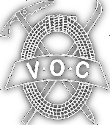
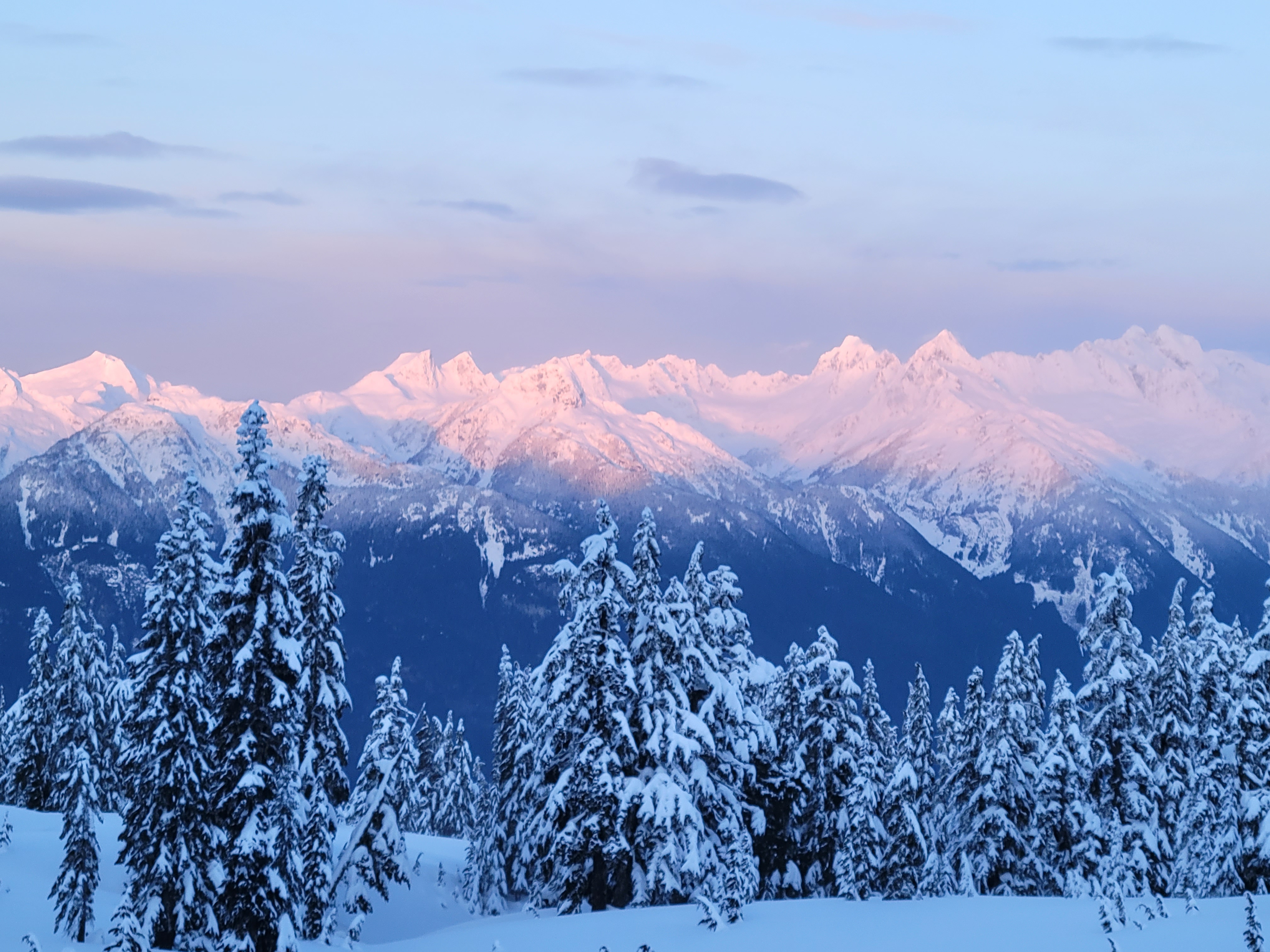
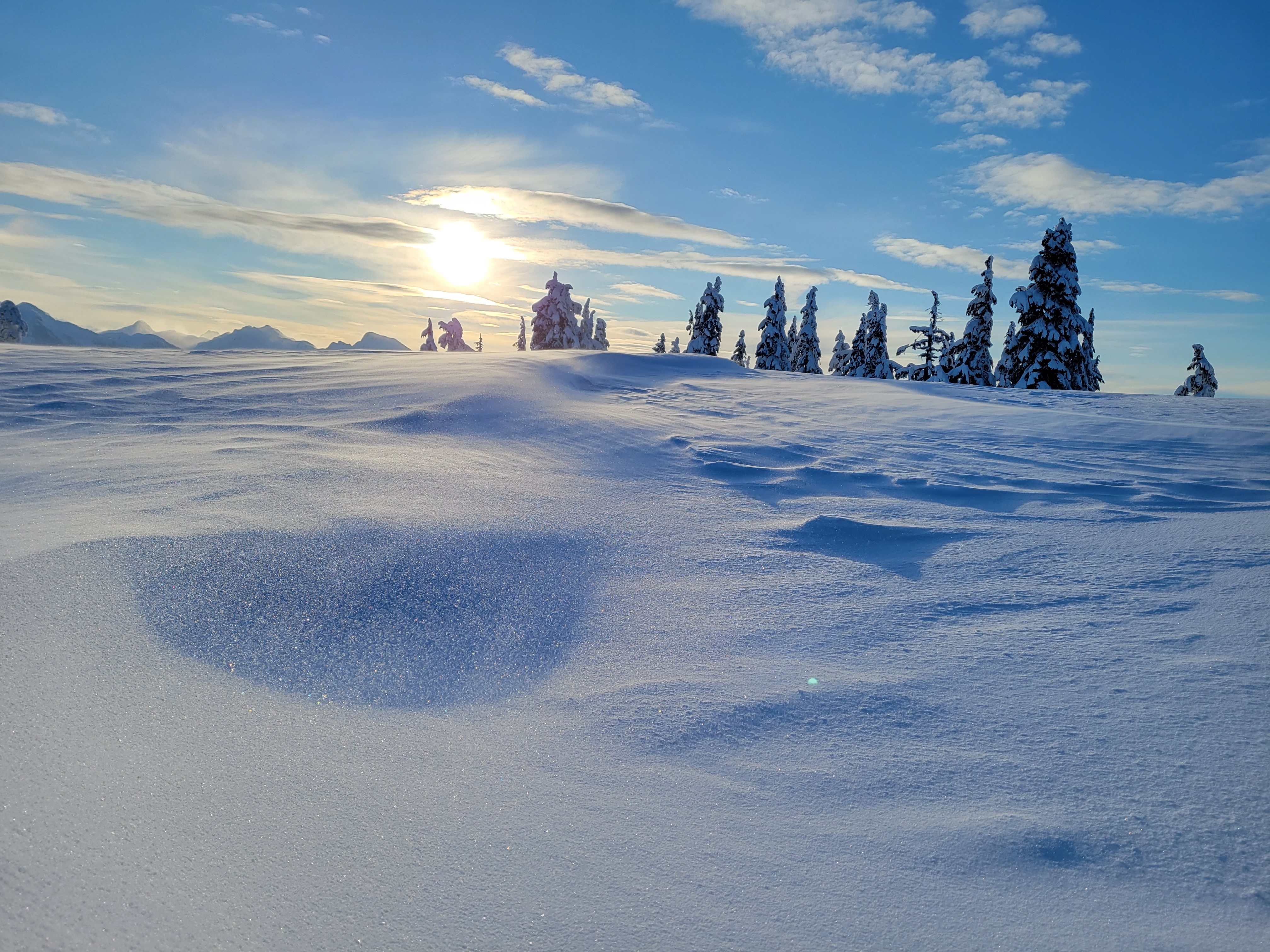
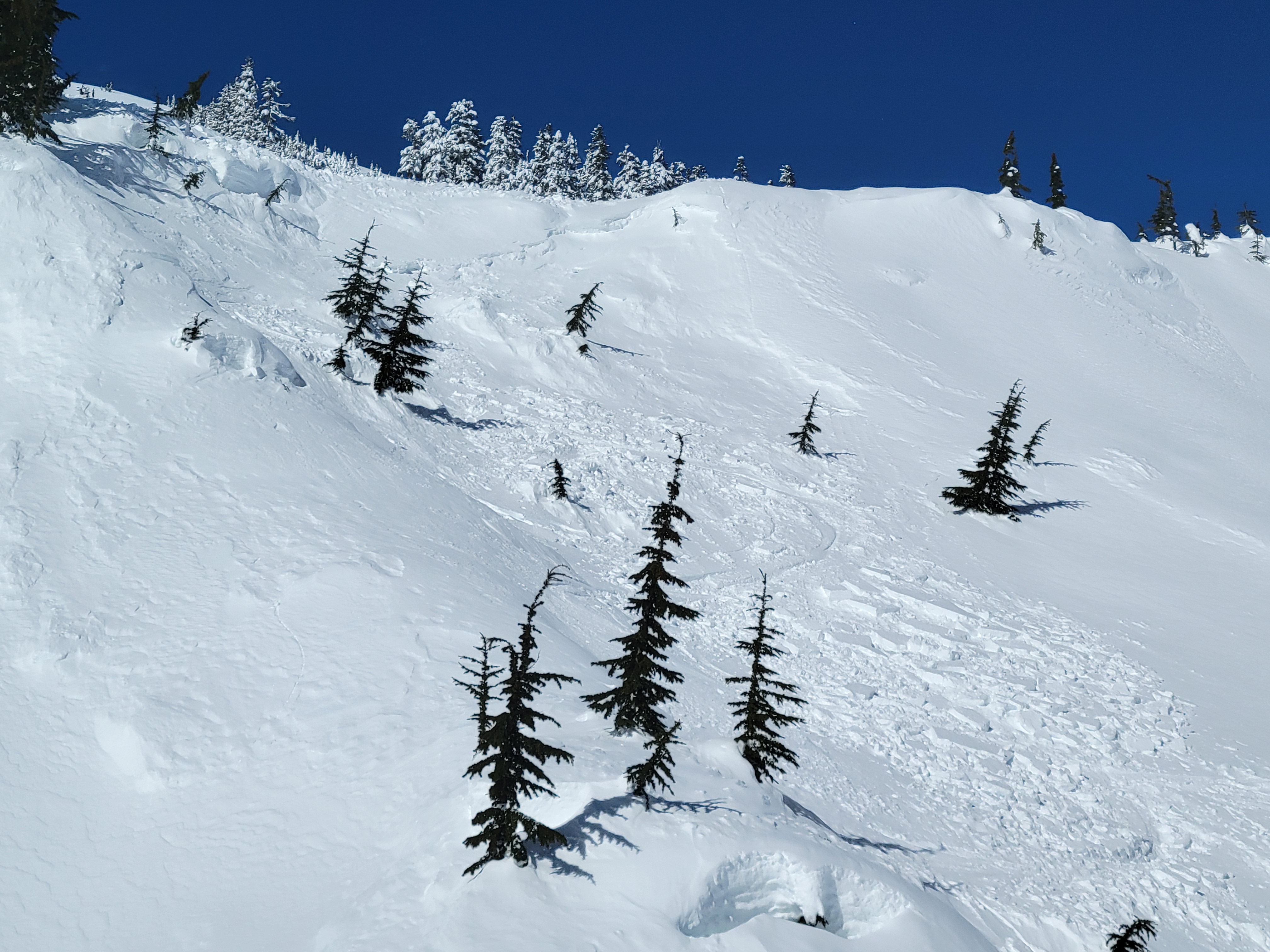
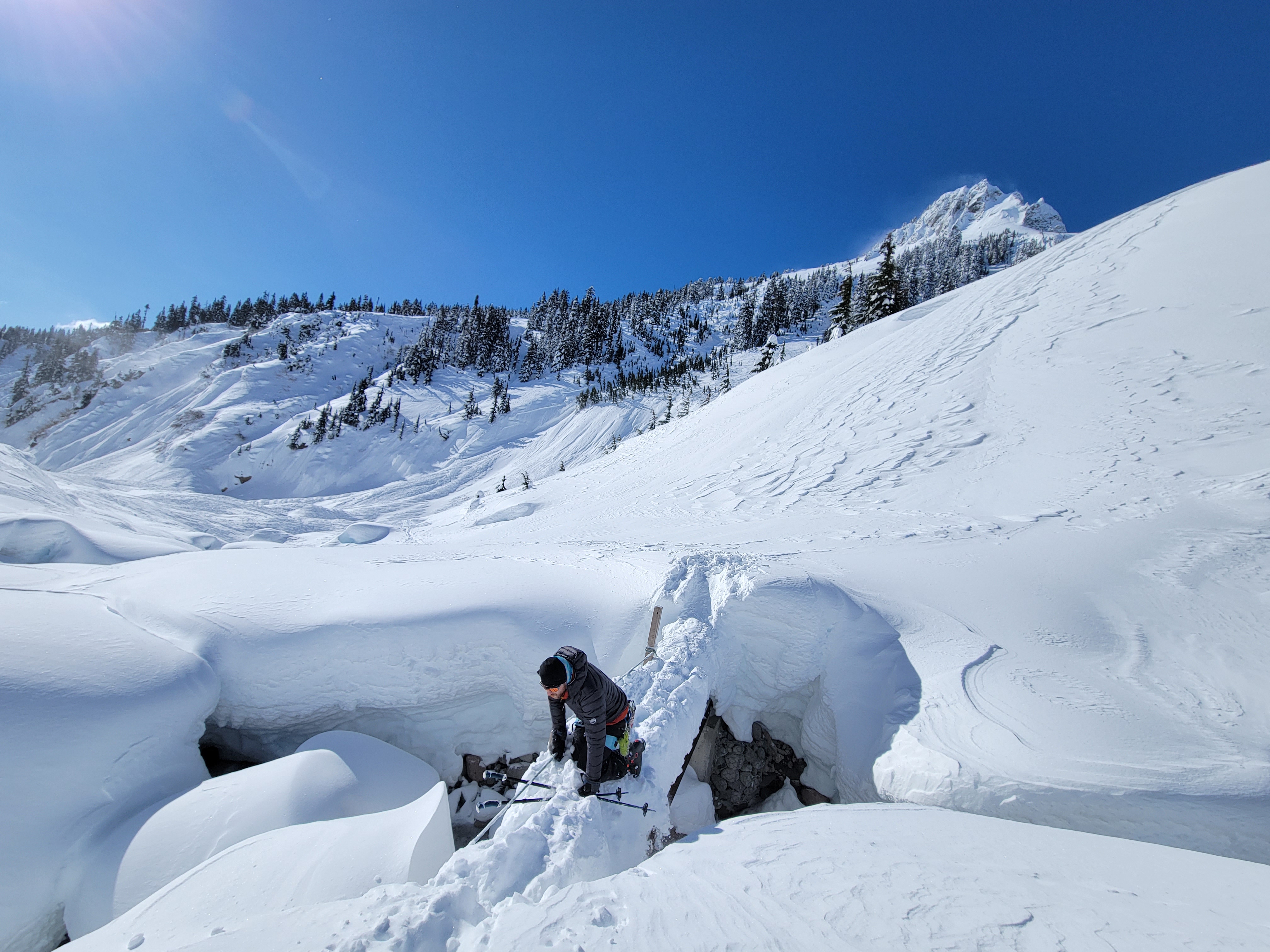
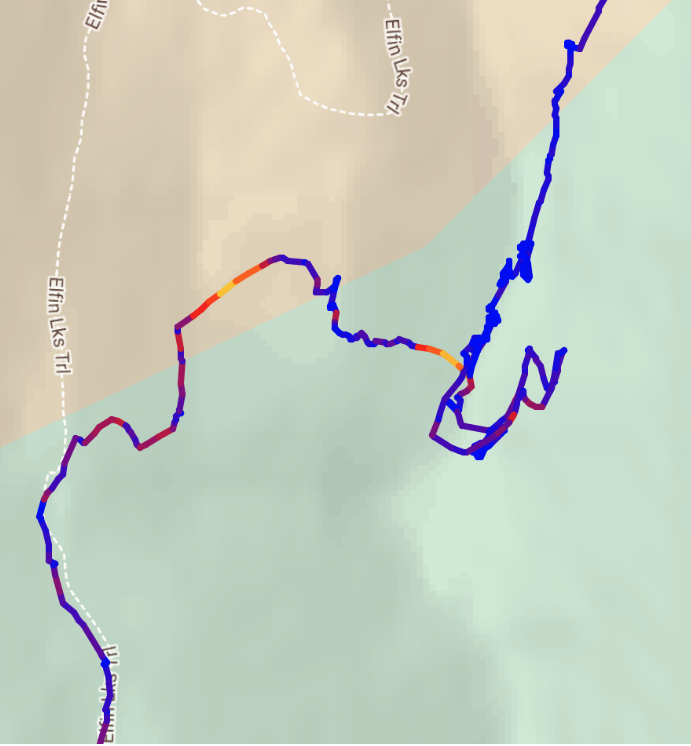
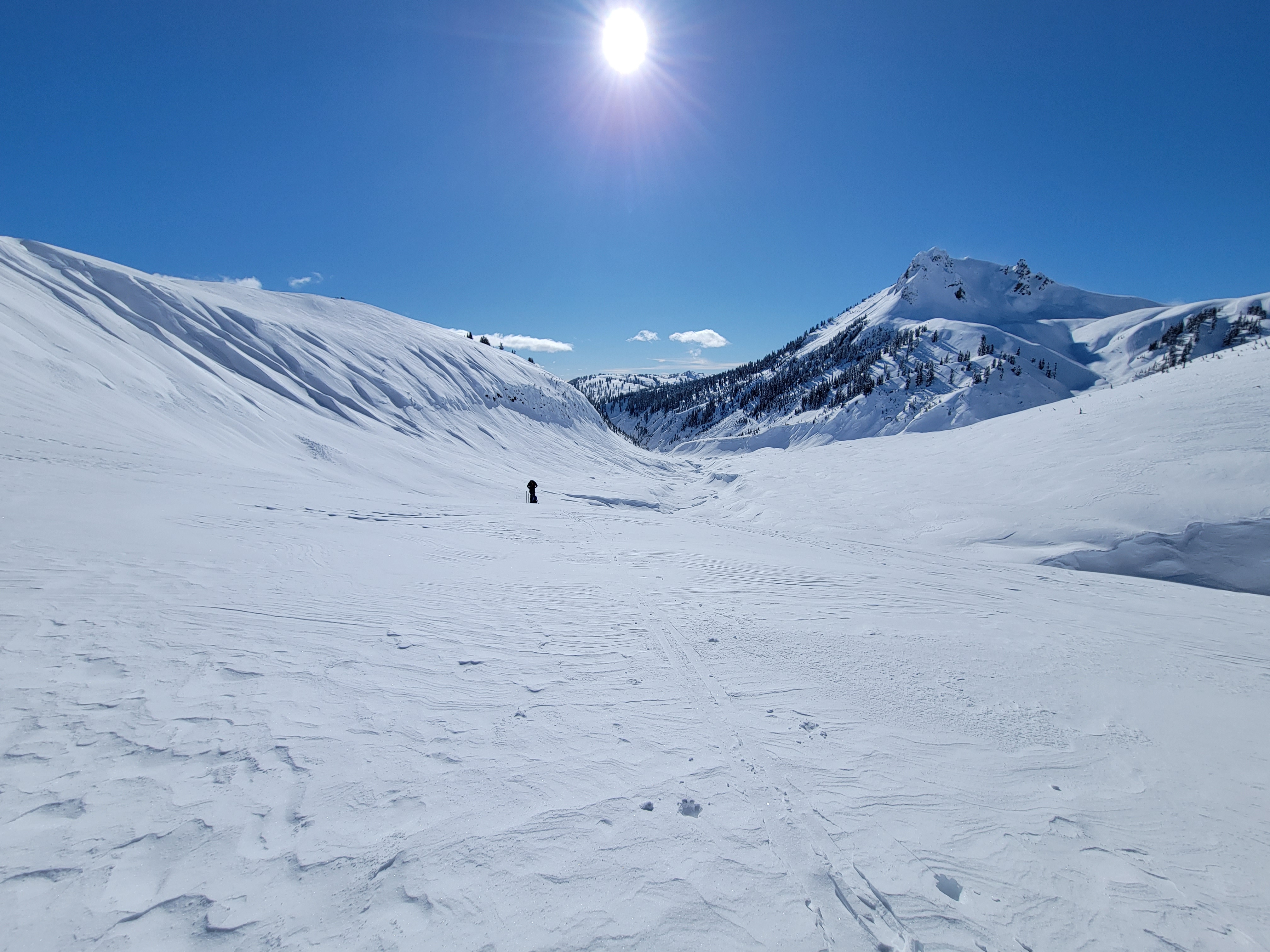
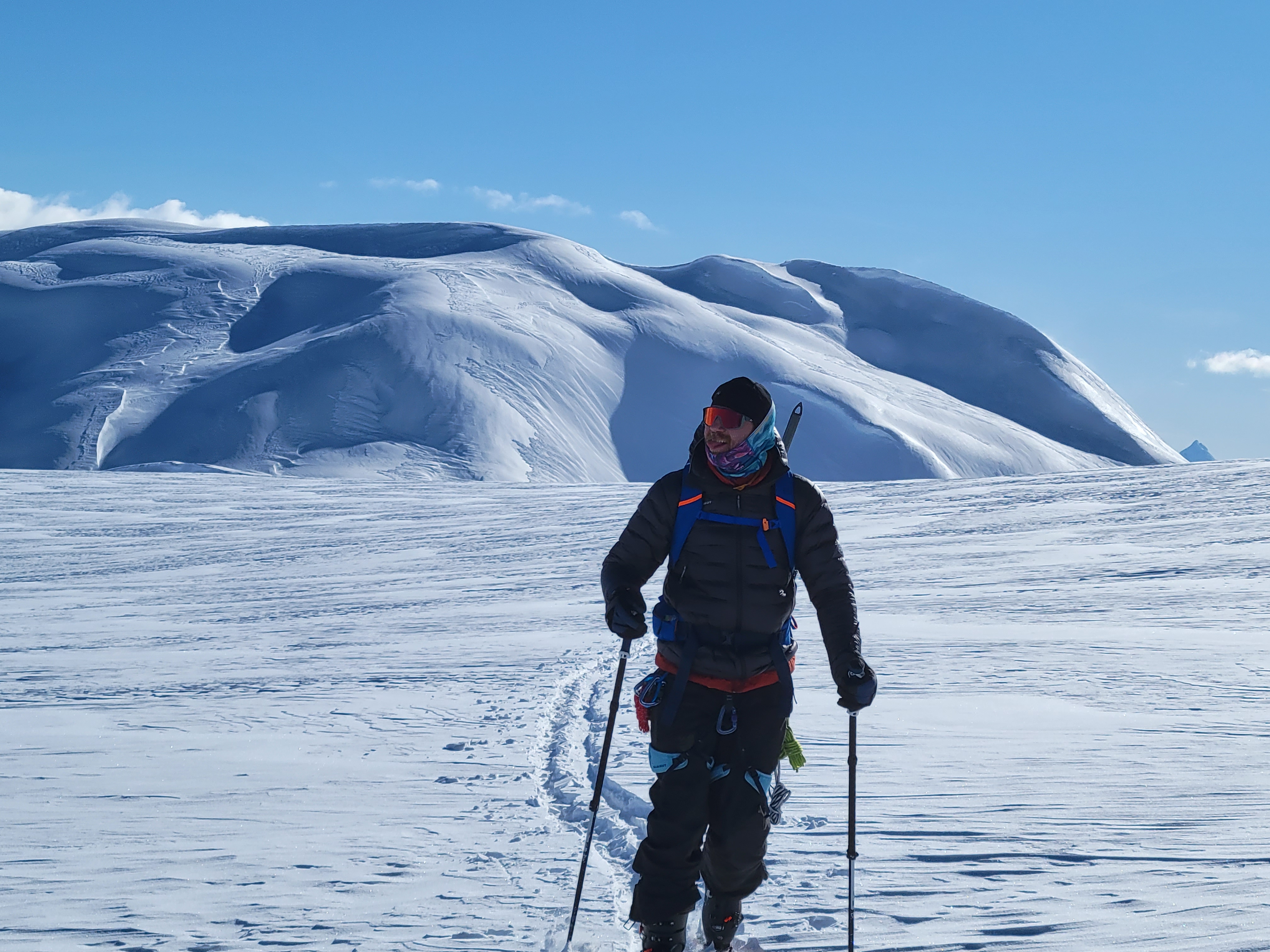
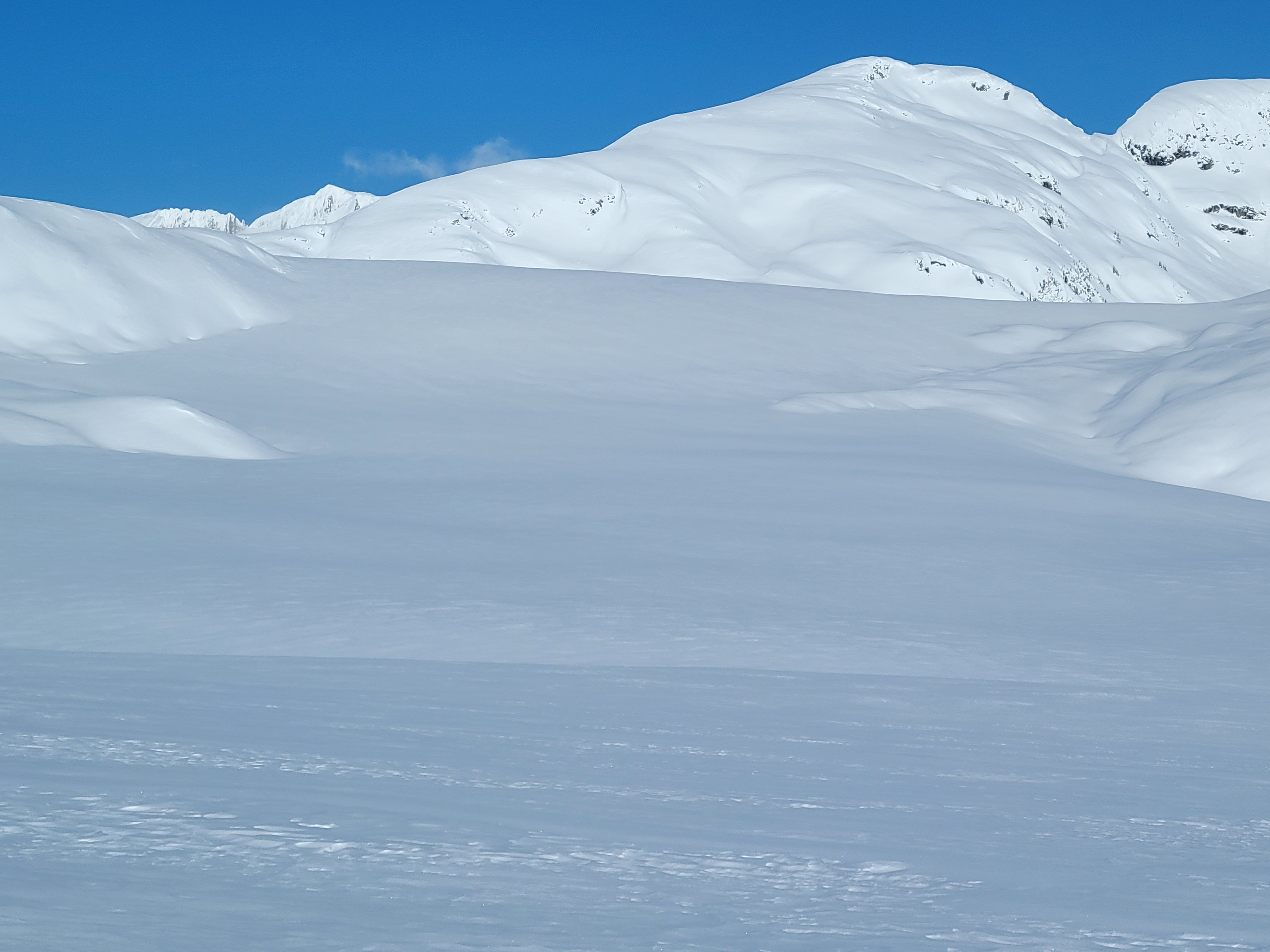
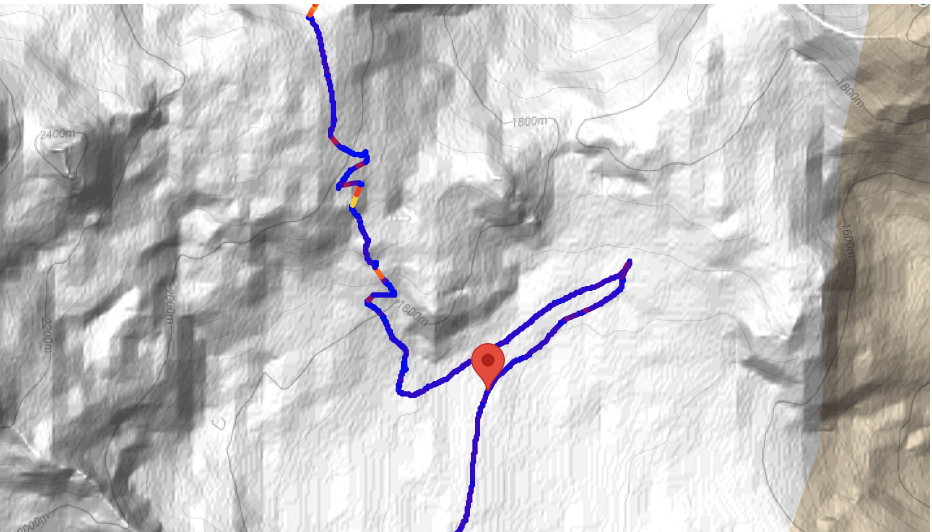
thanks for sharing! sounded like an incredible 24hrs
Great trip report, love the takeaways included at the end.
Excellent trip report and sum-up recommendations. There were several frostbites among people out there that weekend. Definitely know your boots and consider shorter trips on -20 days. Hoping the recovery is going well.